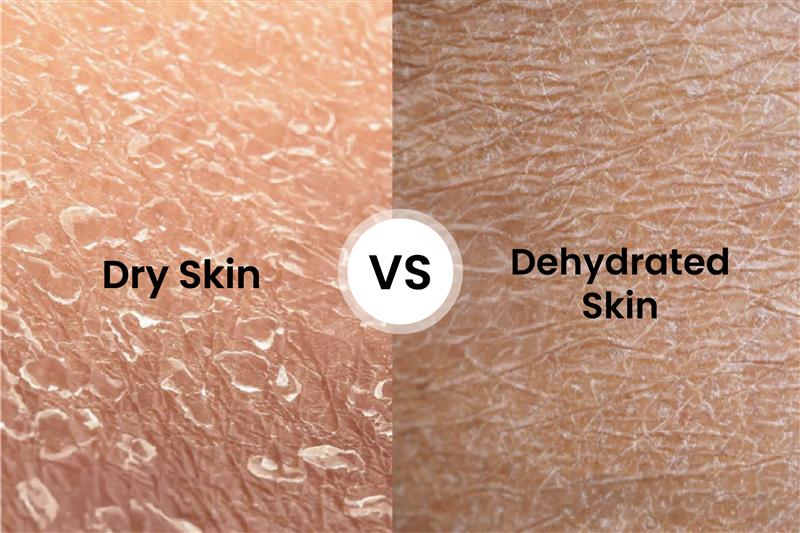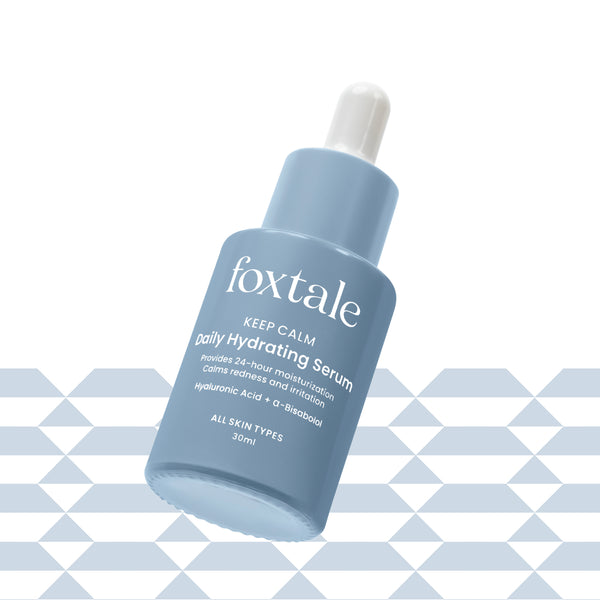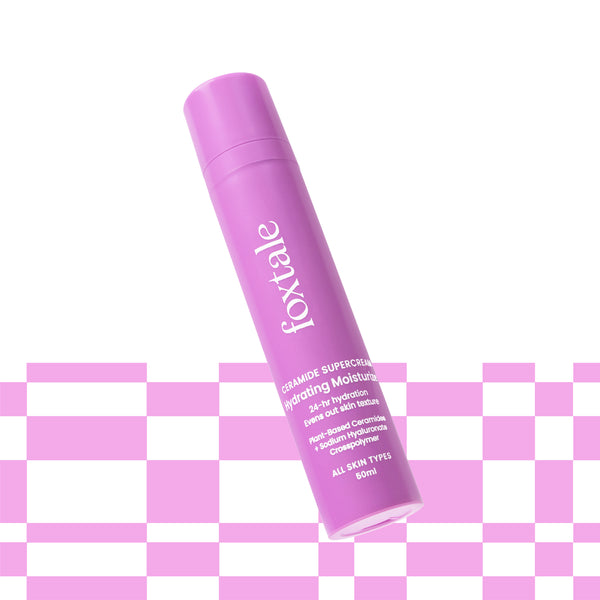
If your face feels uncomfortable, looks uneven, or just lacklustre no matter what products you use, you might be dealing with either dry skin or dehydrated skin. While the terms often get used interchangeably, they’re not the same thing. One is a skin type. The other is a temporary skin condition.
Knowing the difference between the two isn’t just skincare trivia — it’s key to choosing products and routines that actually work. Get it wrong, and you might be making your skin worse without realising it.
Let’s break down the differences between dry and dehydrated skin, how to spots them, and what to do about it.
What is Dry Skin?
Dryness occurs when your skin doesn’t produce enough natural oils (sebum) to keep the barrier soft, smooth, and protected. Without that oil, moisture escapes more easily, and your skin becomes prone to roughness and irritation.
- Causes of Dry Skin
Dry skin can develop or worsen due to a few common factors:
- Environmental changes: Cold weather, low humidity, and exposure to central heating or dry air strip the skin’s natural oils.
- Harsh skincare habits: Over-cleansing, frequent exfoliation, or using products with strong surfactants and alcohol can damage your skin barrier.
- Skin conditions: Issues like eczema and psoriasis naturally reduce the skin’s ability to hold on to oils.
- Signs and Symptoms of Dry Skin
You can usually spot dry skin on the face by these tell-tale signs:
- Flaky, rough texture that sometimes looks uneven under makeup.
- A feeling of tightness or discomfort after cleansing.
- Itchiness and redness, especially in cold or windy weather.
What is Dehydrated Skin?
Dehydrated skin is a skin condition — it can happen to anyone, whether your skin type is oily, dry, or combination. The issue here isn’t oil production; it’s the lack of moisture in the skin’s surface layers. When skin doesn’t have enough water, it can’t stay plump, smooth, or radiant.
- Causes of Dehydrated Skin
Some of the most common triggers include:
- Low water intake: If your body is dehydrated, your skin will be too.
- Climate control: Hot climates, air conditioning, and heating systems pull moisture from the air and your skin.
- Lifestyle stressors: Lack of sleep, high stress, and alcohol or caffeine can all contribute to water loss in the skin.
- Signs and Symptoms of Dehydrated Skin
You might notice:
- A dull, tired look — your skin lacks glow.
- Fine lines that seem to appear suddenly, especially when you smile or move your face.
- Tightness or a “parched” feeling, even if your skin looks shiny from oil.
Key Differences Between Dry Skin and Dehydrated Skin
Even though the symptoms sometimes overlap, there are a few clear differences between dry vs. dehydrated skin.
1. Skin’s Ability to Retain Moisture vs. Skin’s Lack of Water
Dry skin struggles because it doesn’t make enough oil to hold moisture in. Think of it as having holes in the roof — water leaks out quickly.
Dehydrated skin still makes oil, but it’s missing the water that keeps skin cells plump. Imagine a sponge that’s oily but bone-dry inside.
2. Texture Differences: Flaky vs. Dull
Dry skin often feels rough, with visible flakes that catch on makeup or clothing. Dehydrated skin doesn’t always flake, but it looks dull, sometimes with increased redness or sensitivity.
How to Identify if Your Skin is Dry or Dehydrated
If you’re not sure which one you have, a couple of simple checks can help.
1. Simple Tests to Tell the Difference
- The pinch test – Gently pinch a small area of your cheek. If it wrinkles easily and doesn’t bounce back, you’re probably dehydrated.
- The feel test – Apply a nourishing Ceramide Moisturizer or oil. If your skin instantly feels comfortable and stays that way, dryness might be the issue.
2. Visual Indicators
Dry skin shows up as visible flakes, cracked patches, and roughness. Dehydrated skin just looks “beat” — less glow, more fine lines, and an overall tired appearance.
Skincare for Dry Skin vs. Dehydrated Skin
Once you know which one you’re dealing with, you can start building a routine that targets the real issue.
1. Skincare Routine for Dry Skin
Throughout the day, opt for a thicker cream that provides a protective barrier for your skin. At night, consider transitioning to a balm or a richer formula to offer your skin deeper nourishment as you sleep.
2. Skincare Routine for Dehydrated Skin
Start with a Hyaluronic Acid Serum — it’s great at pulling water into the skin, almost like giving your face a drink when it’s feeling parched. Allow the product to fully absorb for one to two minutes.
Conclusion
If your skin feels rough, tight, or flaky, chances are it’s dry — which means it’s missing oil. On the other hand, if it looks dull, feels tight and oily in places, or shows fine lines more easily, it’s probably dehydrated — meaning it’s low on water.
You might even be dealing with both at the same time.
Understanding which is which lets you stop guessing — and start using products that actually work for your skin, not against it. Once you get the balance right, you’ll start to notice skin that feels calmer, smoother, and just… better.
FAQs
1. Is Niacinamide good for dry skin?
Yes. Niacinamide strengthens the skin barrier, which helps dry skin hold on to moisture more effectively. Pairing it with a Ceramide-rich cream can improve hydration levels and reduce flakiness over time.
2. How to treat dehydrated skin?
Start by increasing your daily water intake. Then, use a Hyaluronic Acid serum under a lightweight moisturizer to boost hydration. Avoid over-exfoliation, and keep your skincare gentle to prevent further water loss.
3. Is my skin dry because of dehydration?
Not necessarily. Dry skin is about oil deficiency; dehydration is about water loss. You can have one, the other, or both. Doing the pinch and feel tests can help you figure it out before you change your routine.





